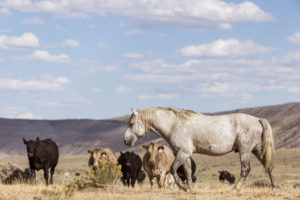Media Advisory
For Immediate Release
December 13, 2019
Contact:
Cyndi Tuell, Western Watersheds Project, (520) 272-2454
The Tonto National Forest covers nearly three million acres of rugged and spectacularly beautiful country northeast of Phoenix. Originally created in 1905 to protect the Salt River Watershed, the Forest currently supplies domestic water sources to the cities and towns surrounding the forest, contributing to the water supply used by millions of people, and helping to sustain human populations in and around a number of rural communities, towns, and cities in central Arizona – including the greater Phoenix area. Of primary and increasing importance are the watersheds’ ability to capture the precipitation that recharges aquifers,
Nearly the entire Tonto National Forest has historically been heavily grazed by over 25,000 head of cattle. Because of its year-round availability, permitted use is extremely high, and land allotments must be carefully managed to avoid over-utilization and declining productivity of the range and damage to the watersheds. National Forest lands on the Tonto are valued for myriad ecosystem services beyond their value as a forage production system for the livestock industry, including the potential to store carbon in the soil and plant biomass, and supporting resilient landscapes where wildlife can thrive in the face of rapid landscape changes due to climate change.
The Draft Resource Management Plan released today includes four alternatives for managing the forest for the next several decades. Only Alternative C would allow the Forest to make any progress towards protecting natural resources from the impacts of livestock grazing and would close all currently vacant allotments.
“Acknowledging the history of heavy grazing, the need to carefully manage these lands, and the need to close vacant allotments is a good first step,” said Cyndi Tuell, Western Watersheds Project’s Arizona and New Mexico Director. “By identifying long-term sustainability as a Desired Condition for these lands, the Forest Service has provided an opportunity to rein in unnecessary and harmful uses of natural resources and place wildlife habitat protection front and center. We expect the Forest Service to take a hard look at the well-documented and widespread impacts of livestock grazing on public lands and the native plants and wildlife that call them home, and finally identify public lands where resources other than livestock forage will be prioritized,” said Tuell.






